Copyright 2020 - 2021 irantour.tours all right reserved
Designed by Behsazanhost
Kerman Fire temple
Kerman Fire temple
Kerman was the second city in Iran to which Zoroastrians had taken refuge and gathered over the past several centuries. It was a small town with about 30,000 inhabitants in the 19th century located on the edge of the Lout Desert (Kavir-e Lut) in southeastern Iran and surrounded by natural protective walls. Kerman city, which was located on the Indo-Iranian trade route, had been an important trading center since the Safavid era. Zoroastrians had lived just outside the gates and Kermani Muslims were more tolerant than Yazidis.
 |
At the beginning of the 18th century, the Zoroastrian and Jewish quarters, due to their vulnerable situation, were decimated by the Afghan invaders. In the 19th century, a small remaining Zoroastrian population of no more than a thousand people lived in a place still outside the walls. Their urban neighborhood was similar to that of Yazdi Zoroastrians, renowned for its cleanliness and order, built defensively with high walls, under restrictions and with limited means, captioned "Zoroastrian Quarter of the City of Kerman," Gabr Maḥalla / Mahale. A fire temple was located inside the city of Kerman, and a daḵma (exhibition tower of the dead) was located outside the residential areas.
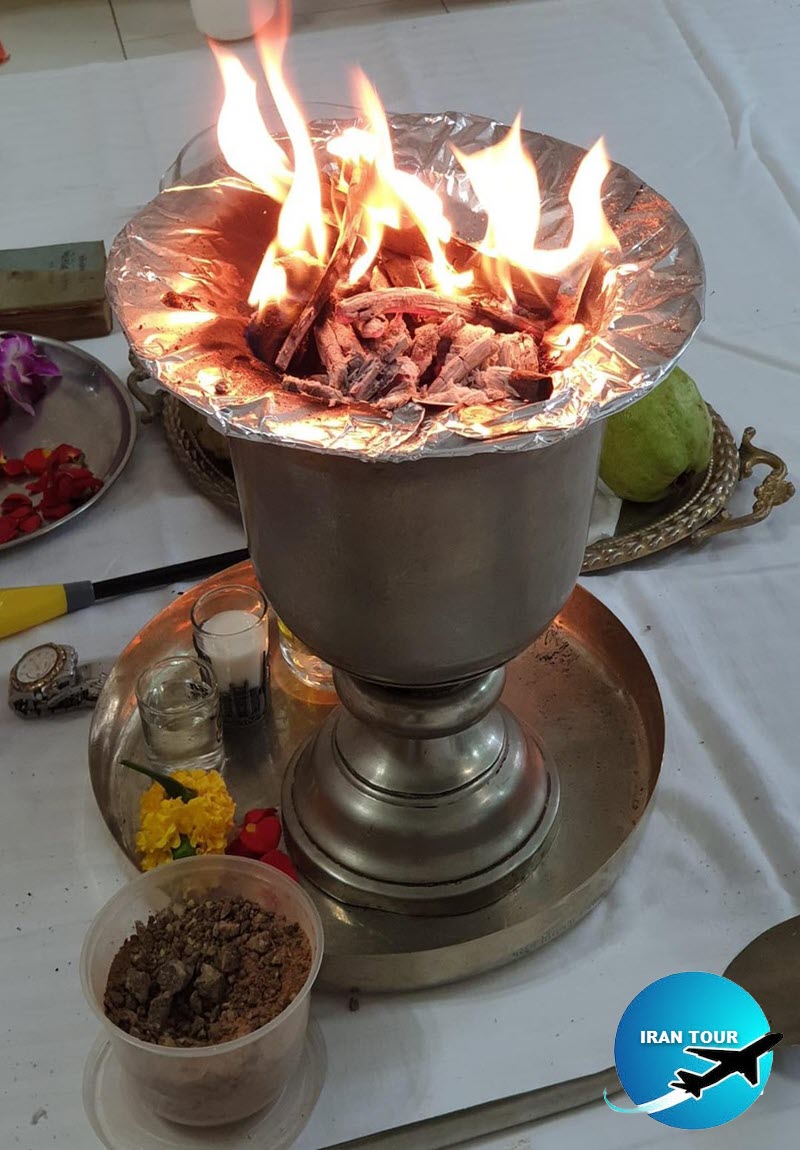 |
Zoroastrian fire temple
The Fire Temple as an institute for the dwelling of eternal fire dates back to the time of the King of Pishdadian, Houshang, and most of them were fueled by wood. At that time, the fire was kept at a central location that was constantly on fire, and households would take the fire they needed for their use (cooking or heating their homes) from there. It is also adapted to the Zoroastrian religion and served as the center for most religious activities. Since fire is holy to Zoroastrians, there is an ever-burning fire in the midst of all the fire temples. Later, they also served as libraries, hostels, medical centers, and ...
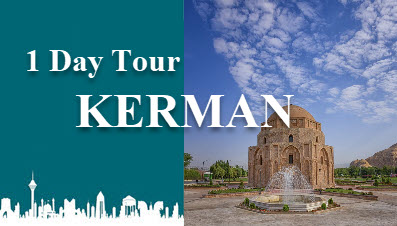 |
After the Islamic Arab invasion of Iran, the Arab invaders forced their religion, and while this religion prevailed in Iran and many temples were forcibly converted into mosques, Kerman and Yazd became the two provinces that continued to maintain a significant number of fire temples. The fire temple as an institution for the dwelling of eternal fire dates back to the time of the king of Pishdadian, Houshang, and most of them were fueled by wood. At that time, the fire was kept at a central location that was constantly on fire, and households would take the fire they needed for their use (cooking or heating their homes) from there.
It is also adapted to the Zoroastrian religion and served as the center for most religious activities. Since fire is holy to Zoroastrians, there is an ever-burning fire in the midst of all the fire temples. Later, they also served as libraries, hostels, medical centers, and ...
After the Islamic Arab invasion of Iran, the Arab invaders forcing their religion, and as this religion moved to Iran and many temples were forcibly converted into mosques, Kerman and Yazd became the two provinces that have continued to maintain a significant number of Zoroastrians. This is why other Zoroastrian fire temples are founded in this region.
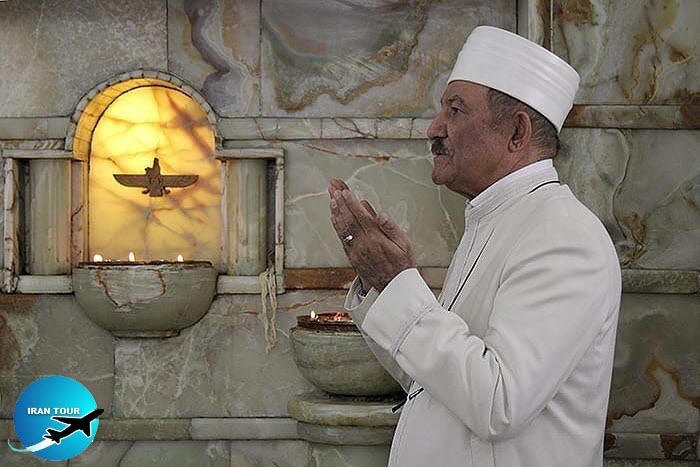 |
Kerman fire temple
This temple is in Zarisf (Shohada street), Mirza Brooze Amighi street, and is the latest fire temple in Kerman, it is located in Mosaffaie garden that was Jahangir Ashider’s house before, and became into a fire temple with some changes. The present fire in this temple is that millennium fire which is brought from India to the city fire temple and then transported to this fire temple at the messenger angle (Soroush) day of 3652 Shahrivar Yazdgerdi. The age of this fire temple is more than 90 years (1387 solar year=3746 Yazdgerdi). Today it is in use as a Zoroastrian museum.
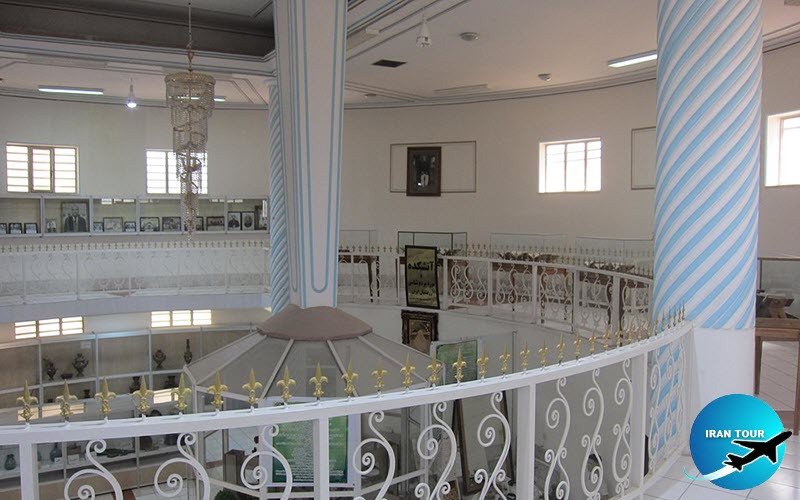 |
Zoroastrian anthropological museum
It is the first such museum in the world and was officially opened during Jashn-e Tirgan (Tirgan Ceremonies) in 2005 by the Iranian Cultural Heritage, Handicrafts and Tourism Organization (ICHHTO). The museum presents the ancient history of Zoroastrians, historical Zoroastrian religious texts, Zoroastrian religious customs and ceremonies, different types of candles, braziers, and tallow burners. The oldest objects in this museum are a manuscript volume of Gothic (an archaic Germanic language) which belonged to 200 years ago.
Zoroastrian Temples and Fire Museum
The city of Kerman has two fire temples that we are aware of, an old temple which houses a wood fire and a newer temple opened in 2001, and another which uses a gas fire. The new temple was built about 350 meters from the old temple, and its construction was made possible by donations from Farzaneh Hormozyar Oshidari and Mahindokht Siavashian.
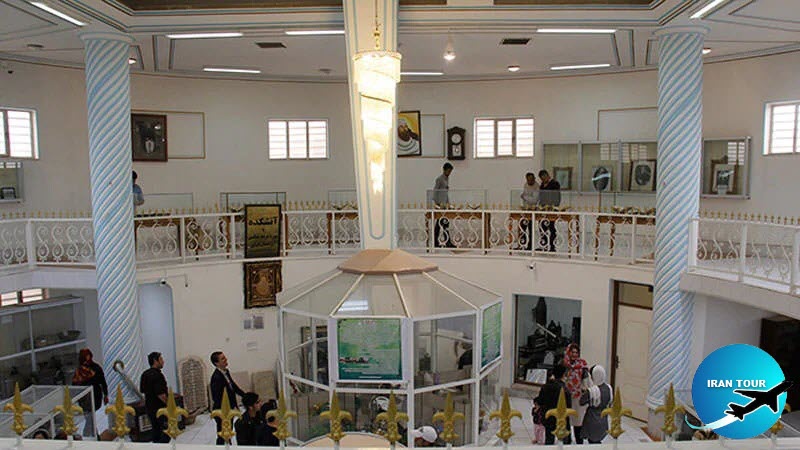 |
In an unusual move, the new temple and its inner sanctum also became the home of an anthropological museum dedicated to Zoroastrianism (rather than a separate room) and the library of the Kerman Zoroastrian Society. The museum was inaugurated in Jashn-e Tirgan in 2005. Among its exhibition collection, there are different types of braziers and lanterns, women's clothing such as coats, dresses, scarves, and trousers decorated with floral designs, all 50 to 150 years old. The museum also exhibits handwritten manuscripts in Germanic Gothic script published in 1828 CE or 1207 Khursheedi. One section holds a collection of ancient photographs of the Zoroastrian societies of Kerman and Rafsanjan, as well as individuals such as Arbab Khosro Shahrokh, Mirza Borzou Amighi, Keshvar, and Pourandokht Khanom.
- Details
- Category: Kerman HISTORICAL SITES